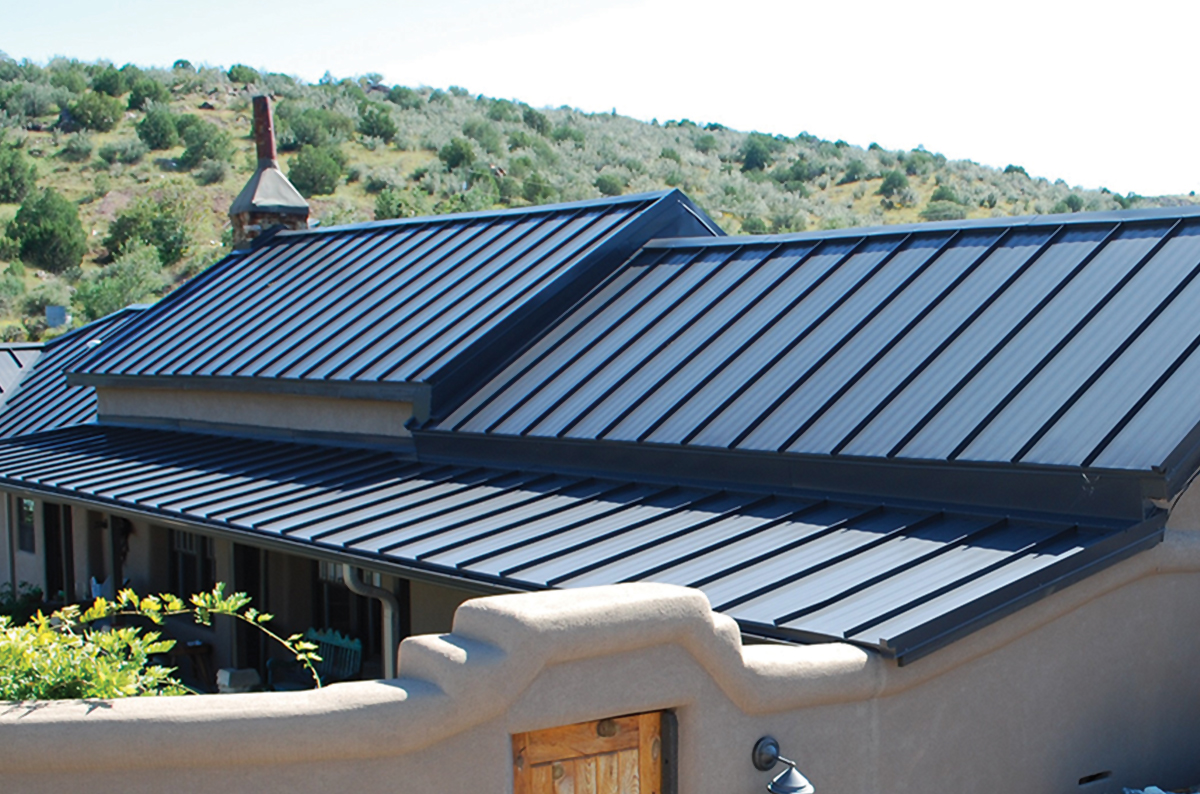How to Install Metal Roof on a Building
If your roof has been damaged several times in the previous few years, you may want to consider switching to metal roofing. Metal roofing is resistant to almost everything and needs little upkeep. It’s not the most cosmetically beautiful and may be particularly loud during storms, but you won’t need to replace it anytime soon. Before beginning the endeavor, plan ahead by locating a window of a few days in which the weather prediction is devoid of any rain chances. Check out London Eco for more.
Instructions To Install Metal Roof
1. Estimate Your Roof
In order to determine how much roofing material you will need, you must take a few measurements of your roof. Determine the length, breadth, and rise of a single segment. The rise is the vertical distance between the lowest and highest points of the roof.
To determine the slope of your roof, you must know the rise. The formula for slope is rise divided by run. Run represents the length of the roof. Calculating the slope factor involves quadrupling the rising number and adding it to the square of the run number. Then, divide the square root of that value by the distance run.
Multiply the value of the slope factor by the area measured. This amount will give you the required square footage. Repeat the procedure for each area of the roof, being sure to add 10% extra length to account for waste.
2. Remove Existing Roof or Commence Installing Metal Roof
Check the number of layers if you want to put a metal roof over an existing roof, since most building rules only permit two levels. Additionally, visit a construction inspector for confirmation, since building regulations might differ. If you want to replace your roof, start removing it. Check the weather before beginning roof removal. You will need two days of clear weather to complete the task.
3. Repair Any Roof Defects
It is an excellent moment to examine the roof structure, sheathing, insulation, and ventilation now that the roof has been removed.
4. Install a moisture barrier
Before installing metal roofing, a moisture barrier or insulating layer must be installed. Roofing felt paper is sufficient. Simply staple or attach it to the wall.
5. Install Drip Edges and Closure Strips
Start putting drip edges around the roof’s eaves and rake. Use galvanized 1-14-inch roofing nails and space them 16 inches apart to fasten them. If you require many lines of drip edges, overlap them by 14 to 12 inches and position the nail under the overlapped junction. Pay attention to gutters as you go along. The drip flashing should extend 1/2 inch beyond the gutter lip.
Add a strip of sealant tape around the drip edge, and then remove the backing paper from the closure strip and apply it over the tape. Do not extend the closing strip.
Install Roofing Metal Panels
Start the installation of metal roofing by overlapping the edging by half to three-quarters of an inch and ensuring that it is parallel to the roof line. Remember to install the metal roofing so that the little edge of one panel overlaps the bigger edge of the following panel. Follow the manufacturer’s instructions for screw placement. If you reside in a location prone to storms, you may be required to adhere to specific construction regulations.
Installing a waterproof membrane under a metal roof
Let’s discuss roof underlayment for a moment. The goal of roof underlayment is to create a waterproof layer that drains water away from the timber frame of the roof. The vast majority of underlayment installations consist of a single layer of 30-pound felt paper.
Understanding how to measure and layout a roof is crucial. After all, you don’t want to learn in the midst of your project that you’re severely lacking crucial material. On each side, we must ensure that the distance between the top of the edge and the first rib is the same.
Therefore, we will relocate the panels and divide the difference in order to create a 10-inch-wide tear on the right and a 10-inch-wide rip on the left. You may be wondering, “How do I know when to put a metal roof?”
Install roofing once your roof’s construction is complete, and preferably after fascia and underlayment have been placed. Additionally, you must have your roof penetrations and vent flashings planned and on-site. Plumbing vents and other vents, such as chimney pipes, may and should be cut in after you’ve laid out your panels, so they don’t lie on ribs or other difficult-to-waterproof locations.
How to prevent rot under a metal roof
Typically, with this kind of installation, there is no need to vent the roof, as the spray foam will completely seal it. However, we are using a product called Techshield, which has an aluminum face on the bottom that reflects all of the radiant heat from the roof and requires a 1-inch air gap.
Therefore, we must install vent baffles in the rafter bays to generate airflow and allow the structure to breathe. We are essentially making a ventilated roof. Therefore, we have a vented soffit that will enable air to enter from the bottom of the roof, move up the rafter bay via the 1-inch gap, and exit the roof. If that wet air gets trapped inside of our roof structure and it becomes particularly cold outside, that moist air will condense into tiny water droplets, which can destroy the wood framing, therefore we must ensure that this roof is well-ventilated.
